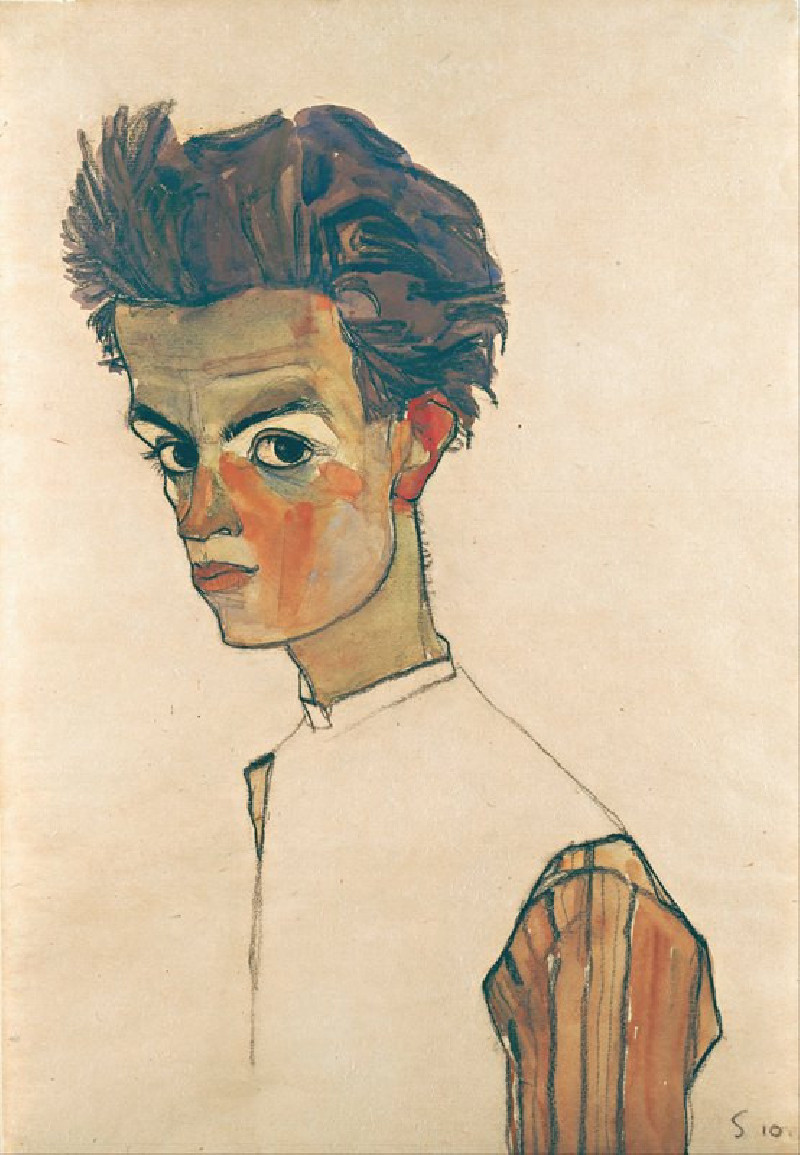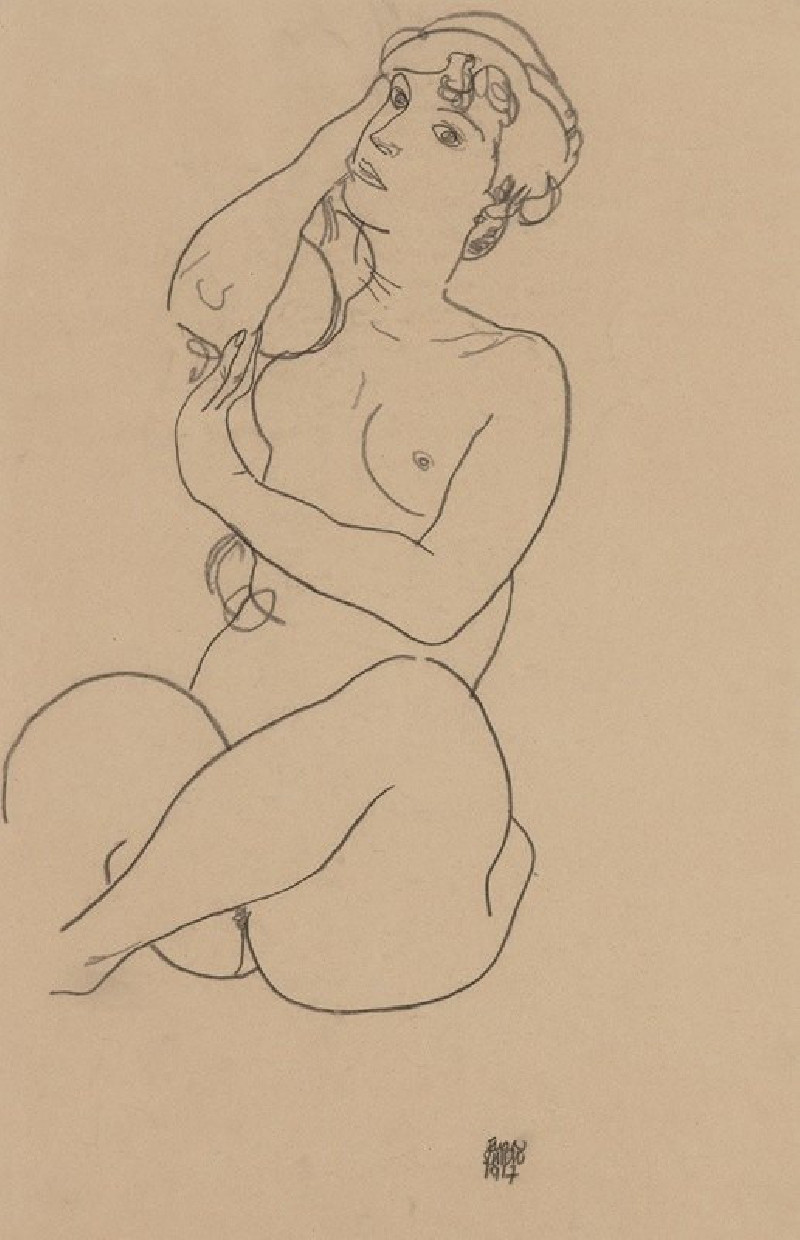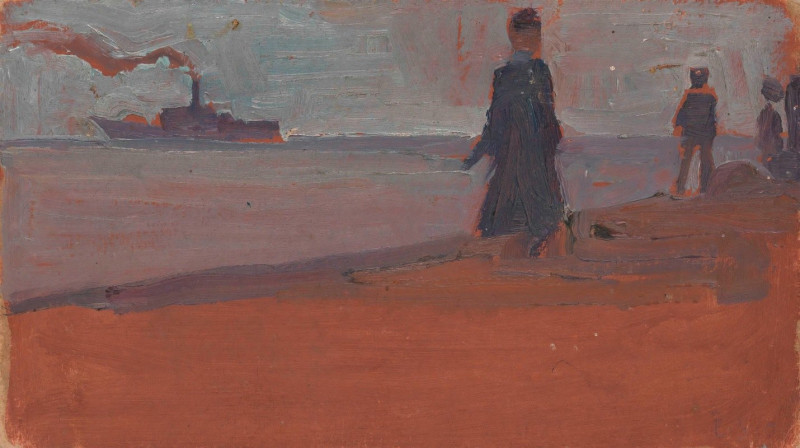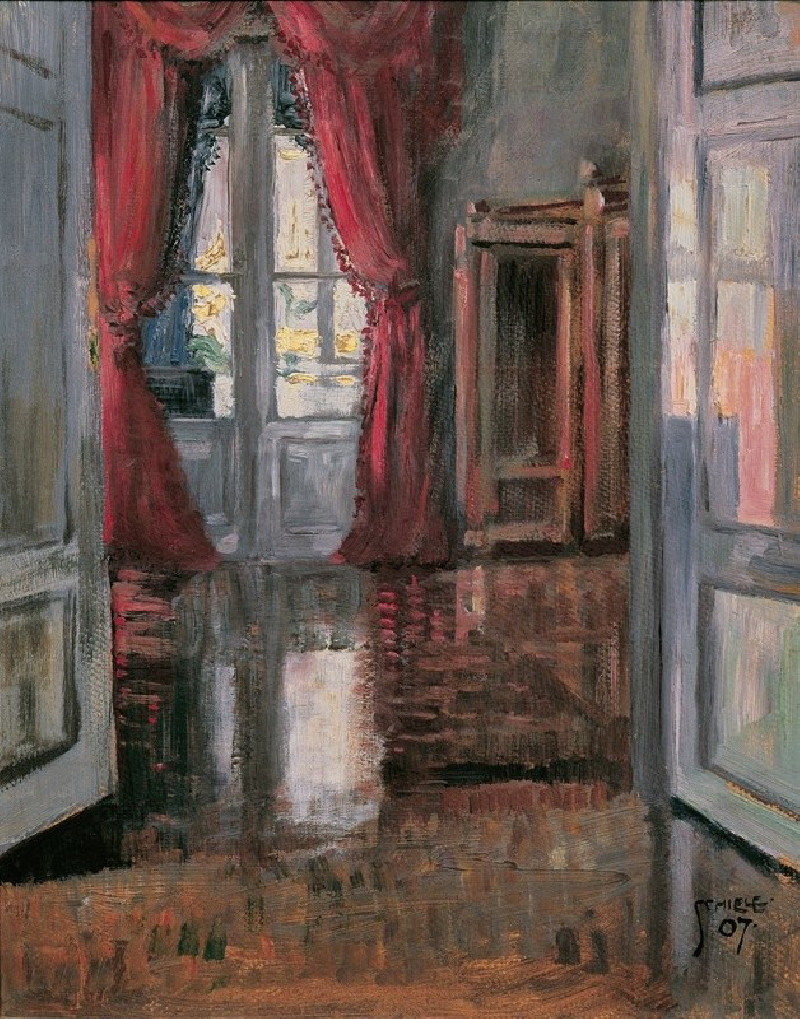Dead City III (City on the Blue River III) (1911)
Technique: Giclée quality print
Recommended by our customers
More about this artwork
Welcome to a deep dive into one of the spellbinding masterpieces by Egon Schiele, 'Dead City III (City on the Blue River III)', created in 1911. This enigmatic painting is a testament to Schiele's ability to capture the haunting stillness of urban decay through his distinct, expressionistic style.In 'Dead City III', Schiele presents a cluster of buildings painted predominantly in dark, muted tones of browns, blacks, and whites, with subtle dashes of color that hint at the life these structures might have once held. The composition is tight, the houses are closely packed, and the perspective seems to be almost toppling into itself, creating a sense of claustrophobia and melancholy. The jagged edges of the roofs and the angular forms of the houses reflect a departure from the romantic depiction of cities; instead, it feels more like a labyrinth of despair and disconnection.The painting captures not only the physical textures of decay—peeling plaster, crumbling brick, and faded wood—but also the emotional atmosphere of a ghost town. The use of deep shadows and the sparing application of light evoke a feeling of mystery and gloom. Despite the name 'City on the Blue River', the presence of the river is not immediately apparent, suggesting a deeper, perhaps symbolic meaning to the blue nuances that appear in the background.Schiele's 'Dead City III' is a powerful exploration of themes like isolation and existential dread, rendered with an intimacy that pulls the observer into its desolate embrace. This painting serves as a brilliant example of how Schiele's work can communicate complex emotional states and narratives through architectural forms and the subtle interplay of light and shadow.
Delivery
Returns
Egon Schiele was an Austrian painter. A protégé of Gustav Klimt, Schiele was a major figurative painter of the early 20th century. His work is noted for its intensity and its raw sexuality, and the many self-portraits the artist produced, including nude self-portraits. The twisted body shapes and the expressive line that characterize Schiele's paintings and drawings mark the artist as an early exponent of Expressionism.












































![Enten am See [Ducks by a lake] reproduction of painting by Alexander Koester. ALL GICLEE PRINTS](https://reprodukcijos.lt/43988-large_default/reproduction-of-enten-am-see-ducks-by-a-lake.jpg)

